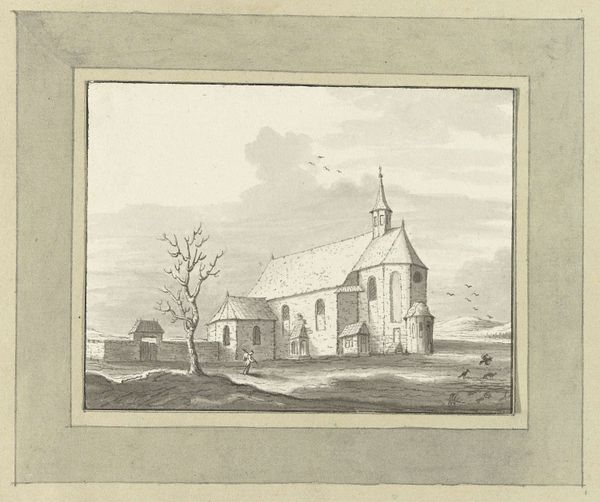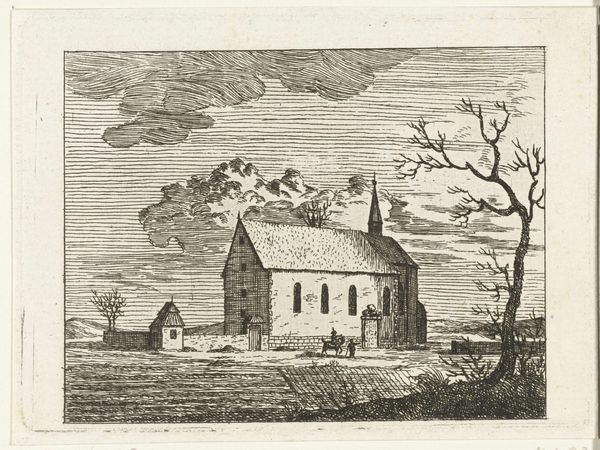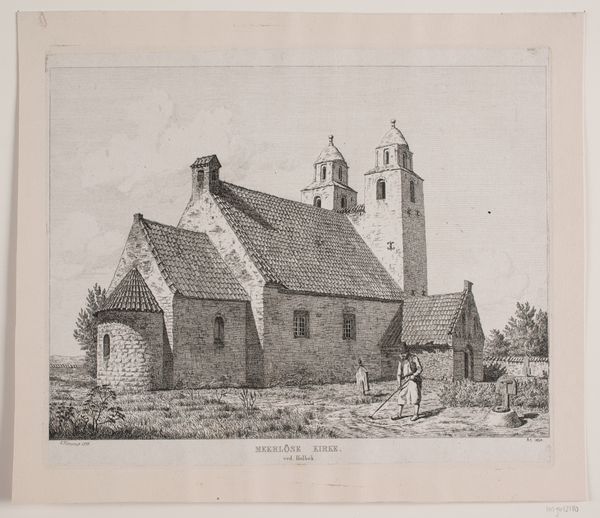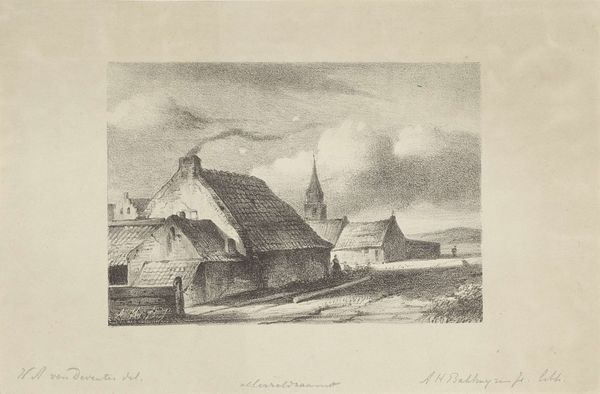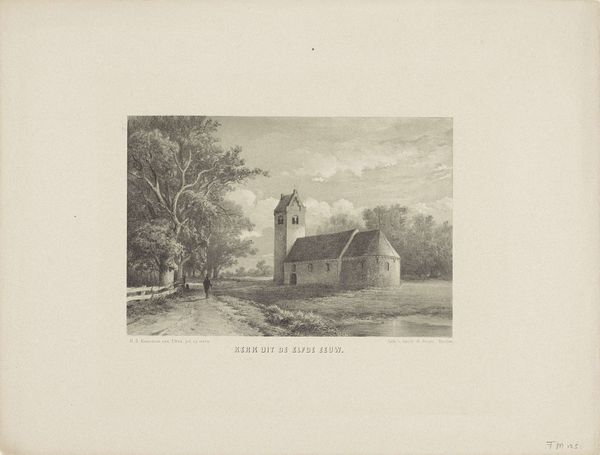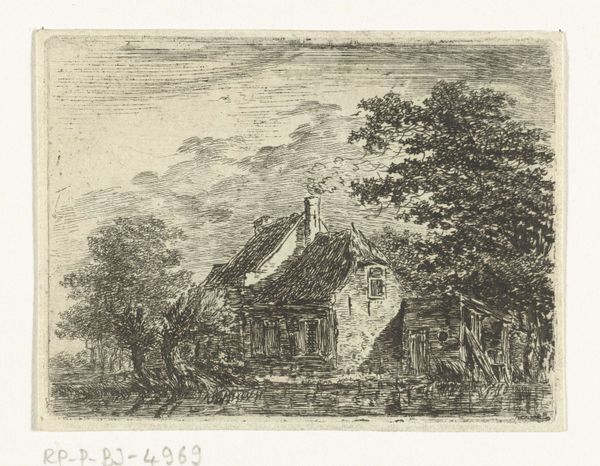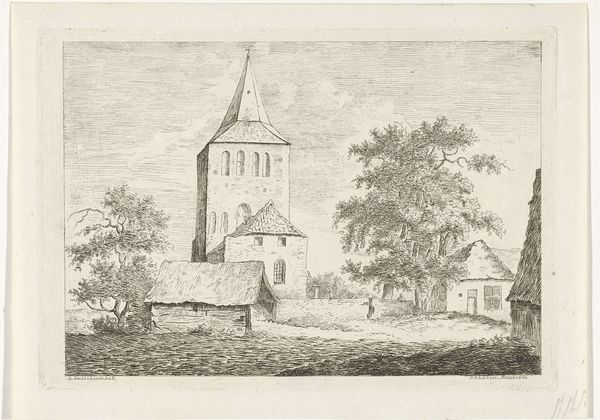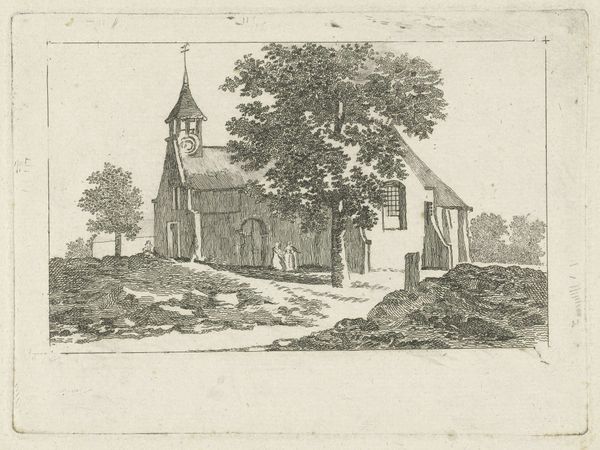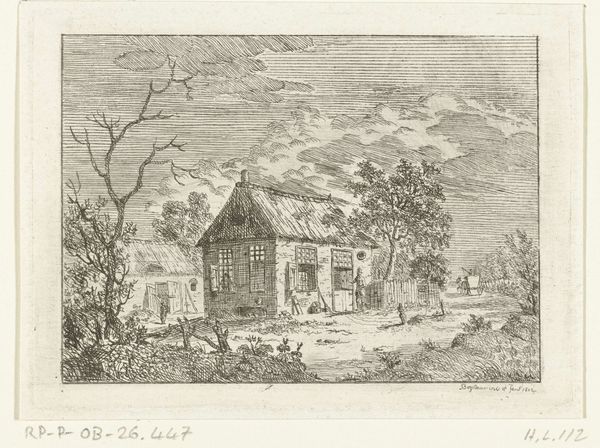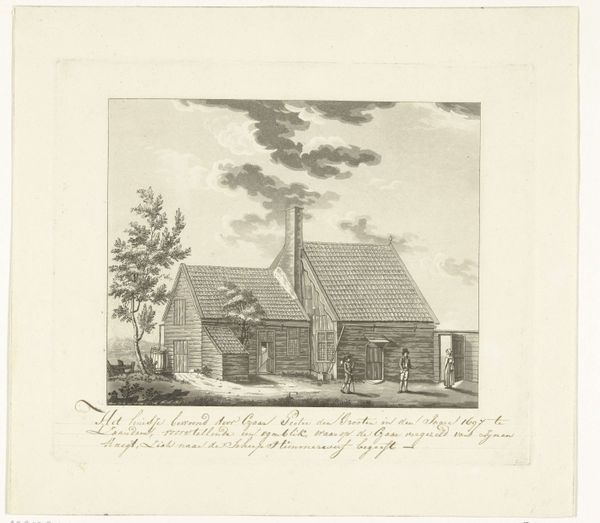
print, etching, engraving, architecture
#
neoclacissism
# print
#
etching
#
landscape
#
engraving
#
architecture
Dimensions: height 93 mm, width 116 mm
Copyright: Rijks Museum: Open Domain
Curator: Ernst Willem Jan Bagelaar created this etching and engraving sometime between 1798 and 1837, titled “View of a Chapel near Zellingen on the Main.” Editor: There's something stark and somber about this print. The way the artist used these precise lines really emphasizes the isolation of this chapel within the landscape. Curator: Absolutely, the materials really dictate the tone. With etching and engraving, the process itself, the acid biting into the plate, demands careful planning, contributing to the meticulous details that compose this neo-classical landscape. How do you feel about Bagelaar’s place in his practice? Editor: Well, for me, that starkness underscores the sociopolitical realities of religious architecture in this period. These buildings weren't just spaces of worship, but symbols of power, reflecting hierarchical structures of society at the time and how those were reinforced visually and ideologically. Curator: The line work, especially in rendering the sky and the open space, really highlights the labor involved in producing such an image. You can see the artist’s hand in every stroke, making the man-made chapel itself almost incidental in comparison to the vastness suggested by the print work in the skies. Editor: Yes, but even the very style, evoking Neoclassicism, reinforces particular norms – control, order, and what and how these informed a community's sense of identity and belonging… and who was being excluded. Even in something that looks like an innocuous landscape. Curator: It's interesting to consider the impact that reproducibility has on our reception, as well. This print was always intended to be reproduced, multiplied and circulated. That’s different from an architectural structure meant to stand where it was made to be. It’s not something to easily move away or break down. Editor: Exactly, this print can travel through different settings, finding new meanings over time with shifting sociopolitical currents. And these could be really complex when thought about outside its immediate region as well. Curator: Ultimately, looking closely reveals much about how buildings and even landscapes become cultural signifiers through deliberate manipulation of materials and labor. Editor: And how art serves as a tangible, though subjective, reflection of power dynamics and cultural identities within its historical moment.
Comments
No comments
Be the first to comment and join the conversation on the ultimate creative platform.
